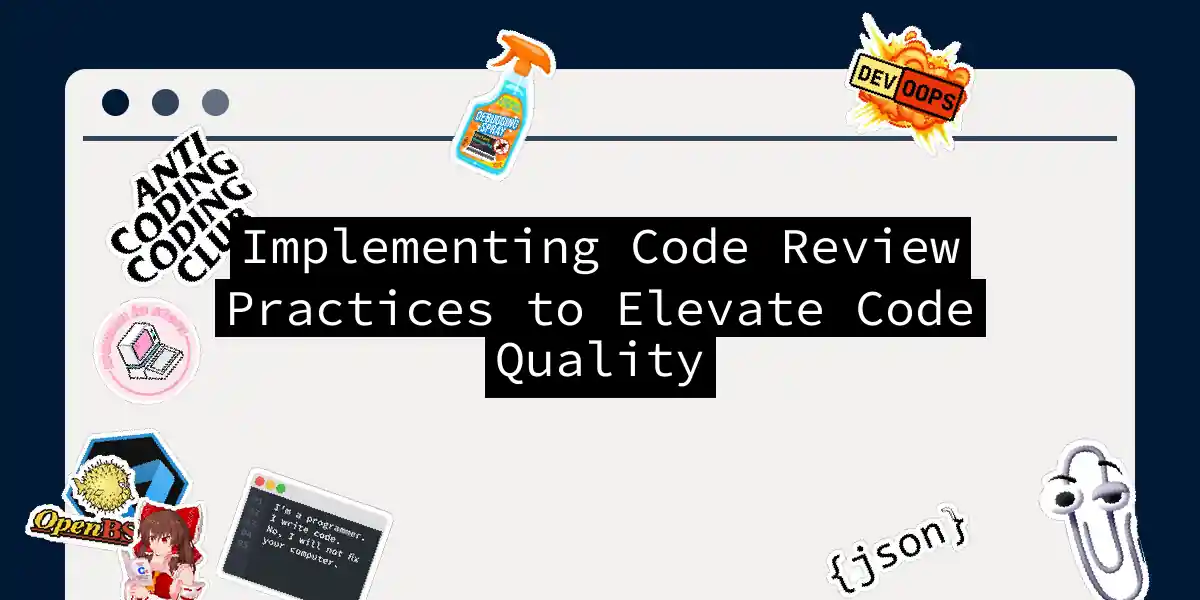The Importance of Code Reviews
In the world of software development, code reviews are more than just a necessary evil; they are a crucial step in ensuring the quality, maintainability, and readability of your codebase. Imagine code reviews as the quality control inspectors of your software factory, making sure every line of code that goes into production is top-notch.
What is a Code Review?
A code review is a process where one or more developers examine and critique a colleague’s code. The primary goals are to identify potential errors, improve code quality, and ensure adherence to best practices and coding standards[3].
Setting Up a Code Review Process
Create a Code Review Checklist
To make your code reviews systematic and thorough, it’s essential to have a checklist. This checklist should cover various aspects such as:
- Readability: Are there redundant comments? Are variable names clear and descriptive?
- Security: Does the code expose the system to cyber attacks?
- Test Coverage: Are there sufficient tests to cover all scenarios?
- Architecture: Does the code use encapsulation and modularization?
- Reusability: Are components, functions, and services reusable?[2][3].
Here’s a simplified example of what such a checklist might look like:
Ensure Constructive Feedback
When reviewing code, it’s not enough to just point out what needs to be fixed; you need to explain why. This approach helps the author understand the reasoning behind the suggested changes and avoids future similar mistakes[2].
For example, if you suggest avoiding multi-threading in a particular scenario, explain why the concurrency model isn’t offering any performance advantage in that context.
Best Practices for Conducting Code Reviews
Review Fewer Lines of Code at a Time
Research has shown that reviewing more than 200-400 lines of code at a time can significantly reduce the effectiveness of the review. This is because the human brain can only process so much information at once. Limiting the review to this range ensures that you can identify defects more accurately[2][4].
Take Your Time
Code reviews should not be rushed. Take about 60-90 minutes to review 200-400 lines of code. This pace allows for a thorough examination without diminishing your ability to find defects[4].
Use Annotations and Comments
Authors should annotate their code before the review, guiding the reviewer through the changes and explaining the reasoning behind each modification. This not only helps the reviewer but also encourages the author to find additional errors before the peer review begins[4].
Foster a Collaborative Environment
Code reviews should be seen as opportunities for growth and learning, not criticism. Encourage open communication and knowledge sharing between team members. This approach helps in building a positive culture around code reviews, where developers feel empowered to learn from each other rather than intimidated by the process[2][4].
When to Switch from Written Reviews to Face-to-Face Discussions
While asynchronous code reviews are convenient, especially for remote teams, there are times when switching to face-to-face discussions is beneficial. If the conversation becomes too lengthy or if there are many comments and questions, it’s better to have an in-person discussion to clear up misunderstandings quickly[1].
High-Level Contextual Reviews
Good code reviews look at the change itself and how it fits into the codebase, but better code reviews go a step further. They consider the change in the context of the larger system, checking for maintainability, impact on other parts of the system, and the necessity of the change. This approach ensures that the code is not just correct but also easy to maintain and aligns with the overall software architecture[1].
Example of a High-Level Review Process
Here’s an example of how a high-level review process might look:
Implementing Code Review Tools and Processes
Automated Tools
Using automated code review tools can streamline the process and make it more efficient. These tools can log bugs, facilitate discussions between the author and reviewers, and track changes. This ensures that defects are systematically addressed and logged in the defect tracking system[4].
Continuous Improvement
Code reviews are not a one-time process but an ongoing practice. Continuously improve the details of your code reviews, look at changes at a high level, and be empathetic in your tone. Encourage new starters and look for systemic solutions to common issues, such as painful cross-time zone reviews[1].
Conclusion
Implementing effective code review practices is a journey, not a destination. By creating a structured approach with checklists, ensuring constructive feedback, and fostering a collaborative environment, you can significantly elevate the quality of your codebase. Remember, code reviews are about growth, learning, and improving together as a team.
So, the next time you’re about to submit your code for review, think of it as an opportunity to make your code shine, and when you’re reviewing someone else’s code, be the guide that helps them navigate the complexities of software development. Happy coding
